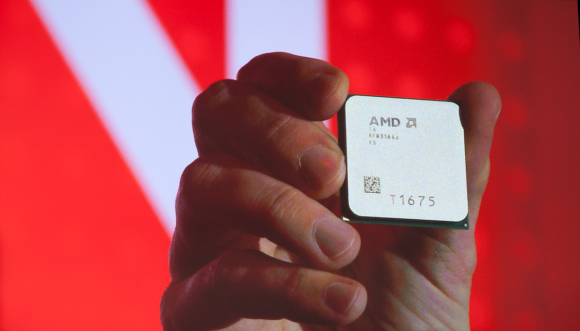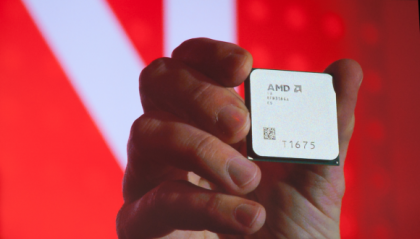[tab name=’News’]
Today is a big day for AMD, or Advanced Micro Devices as the company is also known, as they have unveiled their latest processor family which goes by the name of Trinity. The new processors boast twice the performance per watt compared to the company’s previous Llano chips.
The new range will go head-to-head with Intel’s Ivy Bridge family of processors and, like AMD’s rival, the new Trinity CPU family will feature up to four cores along with a single graphics processing unit.
The first computers that will feature the new Trinity CPU will be the Hewlett Packard Sleekbooks, which will go on sale in the U.S sometime in June this year.
As more manufacturers look towards making thinner and lighter laptops as well as much smaller desktop models, AMD’s focus was to create a processor that is able to offer high levels of performance while also being extremely efficient too. This means that the new Trinity processors are able to run on as little as 17 watts of power – that’s half the minimum amount possible using the company’s previous Llano CPU.
In order to achieve this power efficiency, AMD has created an energy-saving technique known as “resonant clock mesh technology” within the “Piledriver” architecture of its CPU cores. This allows the CPU to recycle some of the energy it has already consumed carrying out calculations.
AMD also claims that further power savings will be achieved by running more processes on the chipset’s Graphics Processing Unit (GPU), which features the same design used in the company’s popular Radeon graphics cards.
Recently, software companies such as Adobe have updated their products, such as Photoshop and Flash, to take advantage of the GPU’s capability to handle something called “parallisable” tasks – in other words, split processes into different parts and run them simultaneously.
Hopefully the new Trinity range will prove to be a popular choice among users, however Intel’s ecosystem is much bigger, so it may take some time for AMD to make a big enough footprint in this market as they look to get their CPUs into more devices.
Let us know your thoughts on our comments below or via our @Gadget_Helpline Twitter page or Official Facebook group.
[/tab]
[end_tabset]

